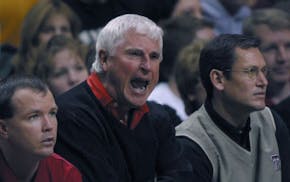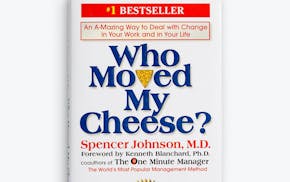Recently, my fifth trip to India brought me face to face with nonstop contradictions. How could a land, primitive in large areas, elbow its way ahead to being the world's fourth-largest economy?
At the Camel Fair in Pushkar, 50,000 camels, along with their owners and traders, congregate for a colorful 17-day festival. That's down considerably from what I saw on my first Pushkar pilgrimage 30 years ago. Motorized options — India now ranks second in two-wheelers and third in small cars — are nudging the beasts aside. Still, the aroma that 50,000 camels can muster is unforgettable.
Check this juxtaposition: My wife and I were in a cart being pulled by a camel and led by a driver. He had a very long rope guiding the camel in one hand, while he was talking on his cellphone with the other. That's India today.
The Indian economy has advanced at 9 to 10 percent in recent years. Now it's slowed to between 5 and 6 percent. Indians think they're in trouble, measuring that growth "camel" against the recent past. Hey, wouldn't we in the United States love to be in that sort of trouble?
The Young Presidents' Organization/World Presidents' Organization — 390 strong — journeyed to New Delhi for a recent university event. Indian executives, professionals and academics dazzled my colleagues and me with mind-blowing insights. Take Amity University — which I also visited. Its huge 20,000-student campus has another large campus snuggled close to it. The most stunning number is the 1 million avid learners Amity has enrolled in 240 programs on 40 campuses and six countries, including online.
When I revisited the Gandhi Memorial Museum in Madurai, I was even more taken by this tribute to modern India's founding father than I was decades earlier. Emblazoned on the wall are Mahatma Gandhi's immortal words: "Live as if you were to die tomorrow. Learn as if you were to live forever."
Priceless wisdom for a continuous-learning fanatic like me. India will need each one of those lessons as its population surpasses China's in the near future.
Awesome challenges foster incredible creativity. One of the smartest lessons in the Indian playbook is known as trickle-up or reverse innovation, described by Dartmouth professors Vijay Govindarajan and Chris Trimble.
Under CEO Jeff Immelt, GE has explored reverse innovation too. Here's how it works: Places like India develop inexpensive versions of high-cost technology and processes. These brainstorms are then remarketed back to "advanced" economies as low-cost options.
Does evidence support the success of this ultimate switcheroo?
According to the Harvard Business Review, a new wave of Indian hospitals emphasizes "world-class health care at ultralow cost," often through selective specialization done at high volumes.
Throughout India, the electric grid is not efficient, hamstringing high-power electro-technology. Battery-powered medical instruments often do the job.
In 2001, a massive earthquake struck India's state of Gujarat, killing over 20,000 and leaving hundreds of thousands homeless. In response, CNN reported, "one young entrepreneur, Mansukhbhai Prajapati … designed a low-cost clay refrigerator which required no electricity and continued to function in the event of major catastrophes."
Much is made of India being the world's largest democracy. While wonderful and true, another powerful bond binds America and India. It's one we Americans would all do well to relearn: India's passion for practical resourcefulness.
Mackay's Moral: Trickle-down economics? India's trickling up … all the way to the bank!
Harvey Mackay is a Minneapolis businessman. Contact him at 612-378-6202 or e-mail harvey@mackay.com.
Mackay: Approach AI with a mindset of collaboration rather than fear

Mackay: The key to winning in sports, business and life is practice

Mackay: Humor can make even dire situations bearable

Mackay: Want a raise? How and when you ask for it matter

